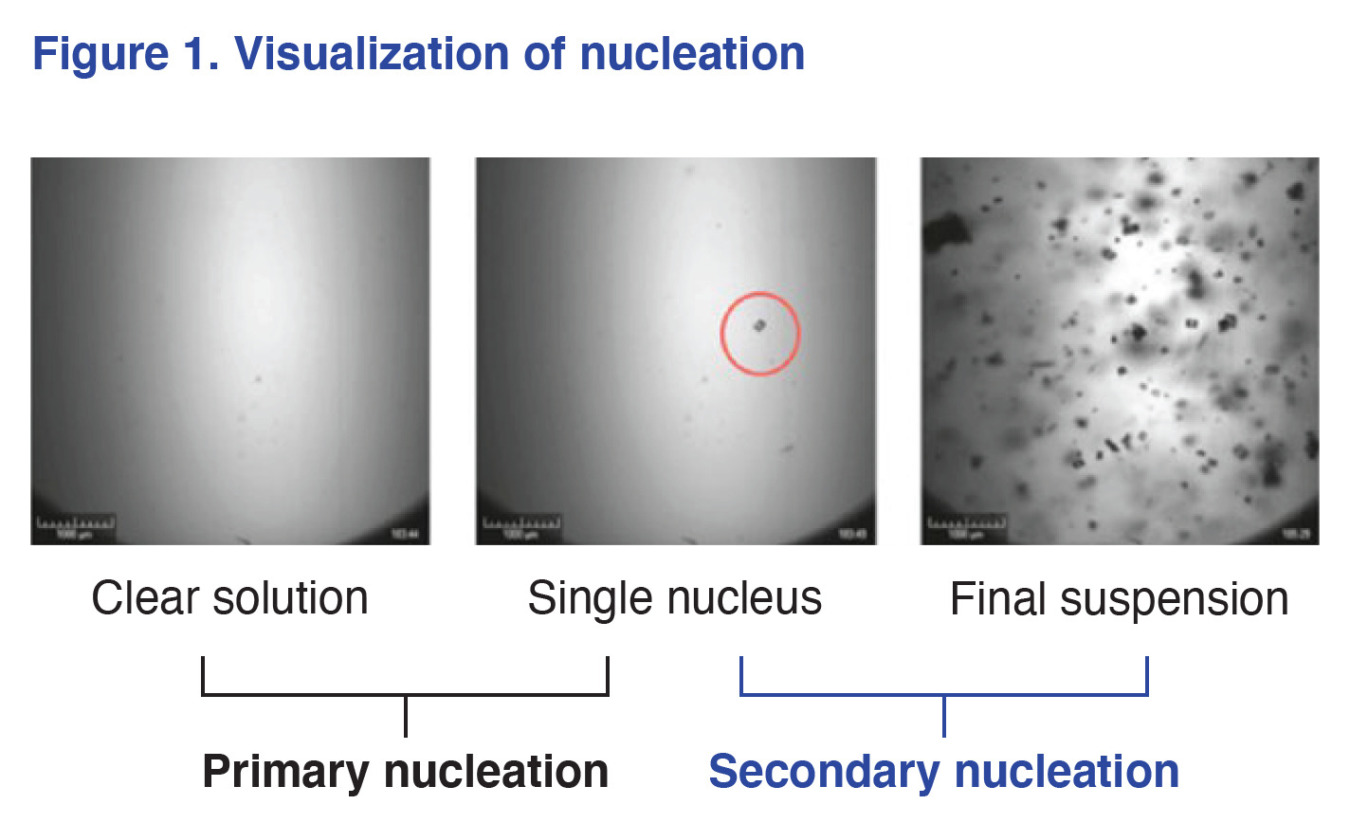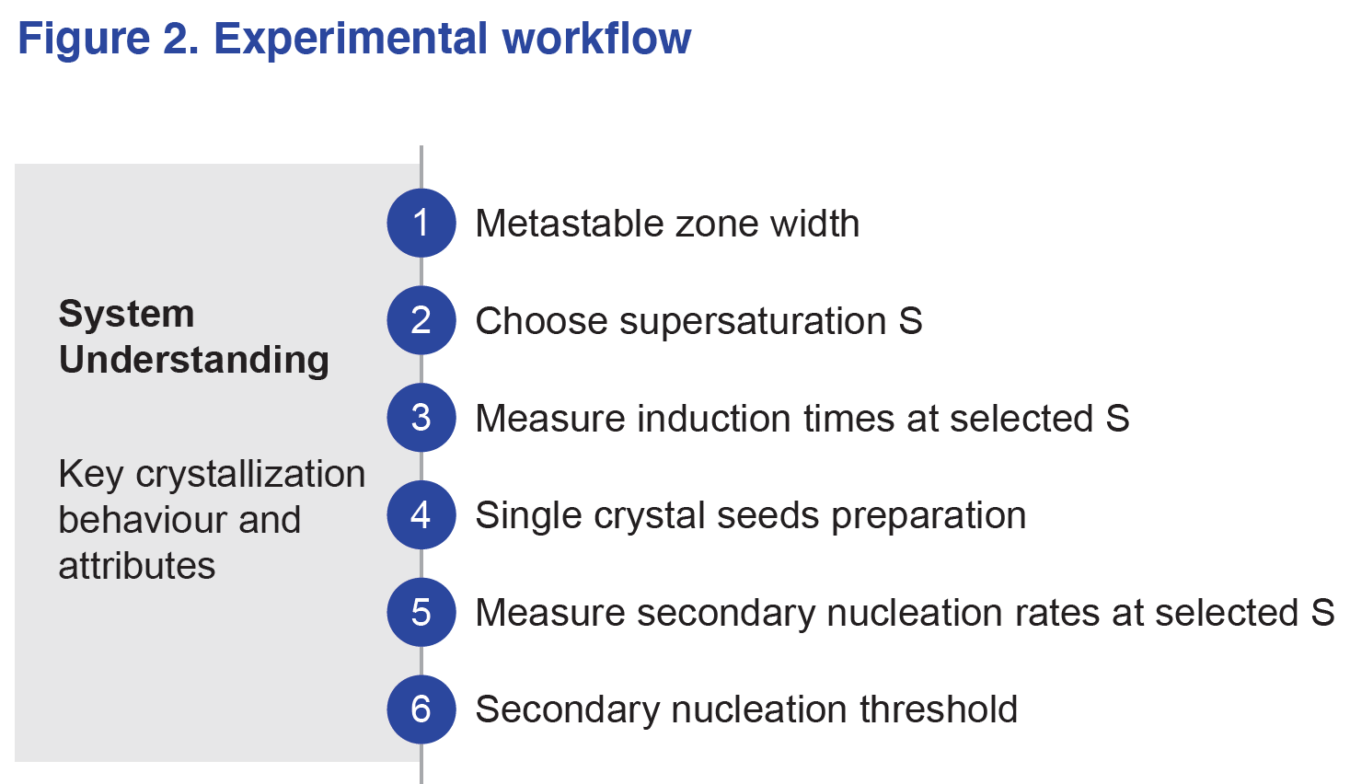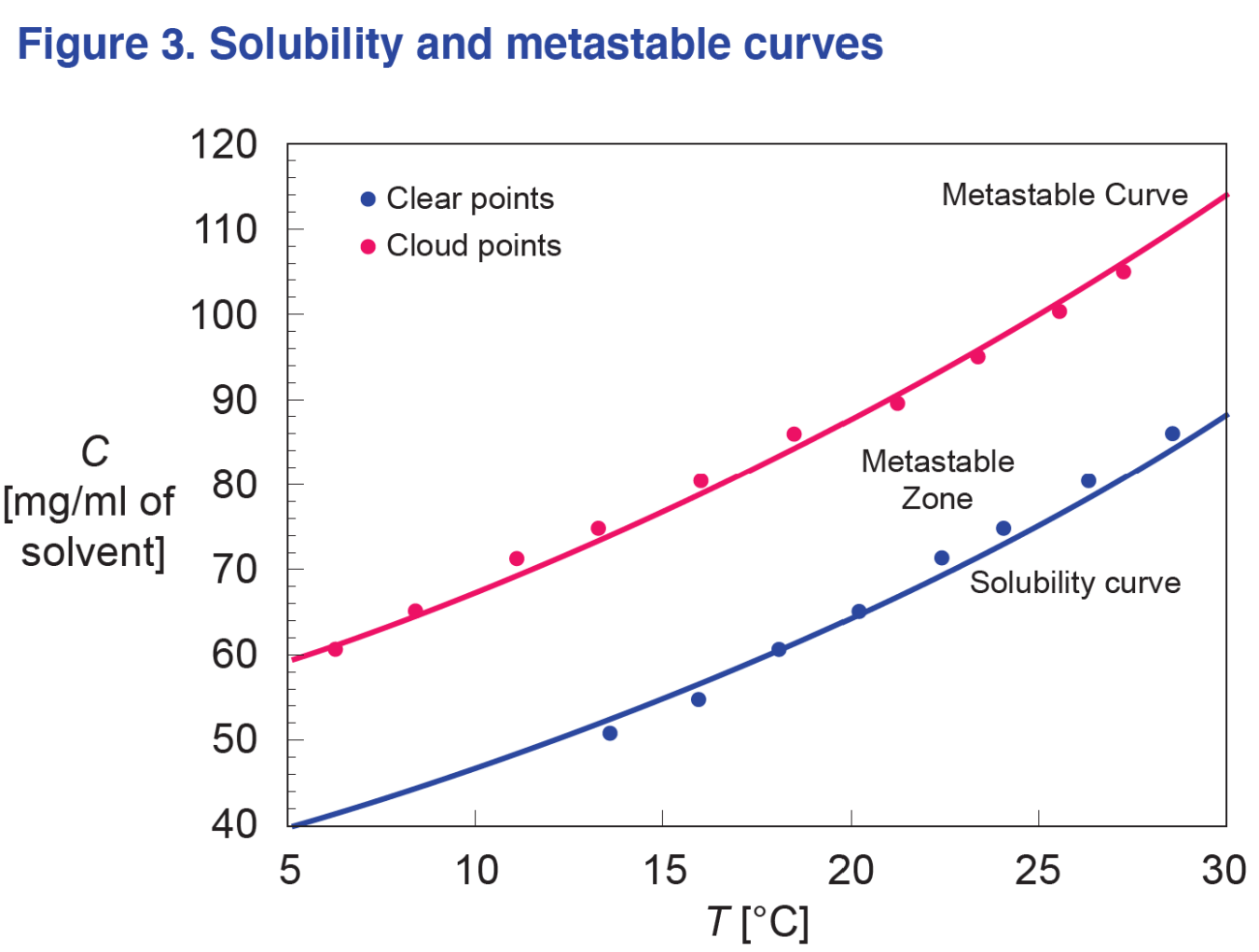Crystallization is a commonly used and complex process that requires multiple control techniques in order to achieve the desired outcome. Challenges can be seen are the formation of the incorrect solid form being produced as well as the wrong PSD (Particle Size Distribution). Control of both of these properties have an impact on biological and economic efficiency of a molecule, determining processability, bioavailability and solubility.
A common solution to address this challenge is a well-designed seeding strategy. Using the Crystal16’s solubility and metastable curve generation as well as the Crystalline’s built in camera functionality, Maria Briuglia was able to design a workflow for measuring secondary nucleation which can then be used to identify threshold supersaturation for seed propagation, as well as how supersaturation, seed loading and size can effect the number of crystals formed after seed addition aiding the design.
Crystal nucleation is the formation of new Crystalline entities from a supersaturated liquid phase and, plays a large role in the final crystal size distribution and polymorphism of a compound and can be classified by how it is induced. Nucleation can be categorized as primary or secondary. Primary crystal nucleation can be either homogeneous which occurs in a clear solution in the absence of Crystalline material of its own kind or heterogeneous which occurs in the presence of impurities or foreign entities. Secondary nucleation occurs as a result of the presence of crystals of the same compound in a supersaturated suspension and is typically seen after seeds are added (Figure 1).

In this case study, isolnicotinamide in ethanol investigated initially to accurately measure secondary nucleation rates while clearly distinguishing secondary and primary nucleation processes. The approach consists in seeding a supersaturated solution with a known amount of well-characterized crystals under conditions at which primary nucleation does not occur. Using Crystalline, on a 2.5-5 ml scale, it is possible to add a single seeded crystal to a clear, supersaturated and agitated solution at constant temperature whilst the number of crystals subsequently formed is monitored.

The seeded experiment shows a suspension density increase 6 minutes after the single seed crystal was added. In the unseeded experiment the suspension density raised only after 75 minutes, showing that spontaneous primary nucleation in the unseeded experiment is detected much later compared to secondary nucleation induced by the seed crystal in the seeded experiment. The suspension in the seeded experiment is therefore the result of secondary nucleation initiated by the seed crystal (Figure 2).
Furthermore, the observed secondary nucleation rate was dependent on the seed crystal size as well, indicating that secondary nucleation is faster using larger single seed crystals (Figure 3). Using this information, it is possible to investigate important factors in developing a seeding protocol such as supersaturation and seed loading to control the number of particles formed after seeding providing a basis to influence the final PSD of a crystallization.

Reference
Maria L. Briuglia, Jan Sefcik, and Joop H. ter Horst, Measuring secondary nucleation through single crystal seeding, Cryst. Growth Des. 2019, 19, 1, 421–429
Curious to learn more?
Read more about the experiments in this article in the application note "Secondary Nucleation through a Single Crystal Seeding Approach".